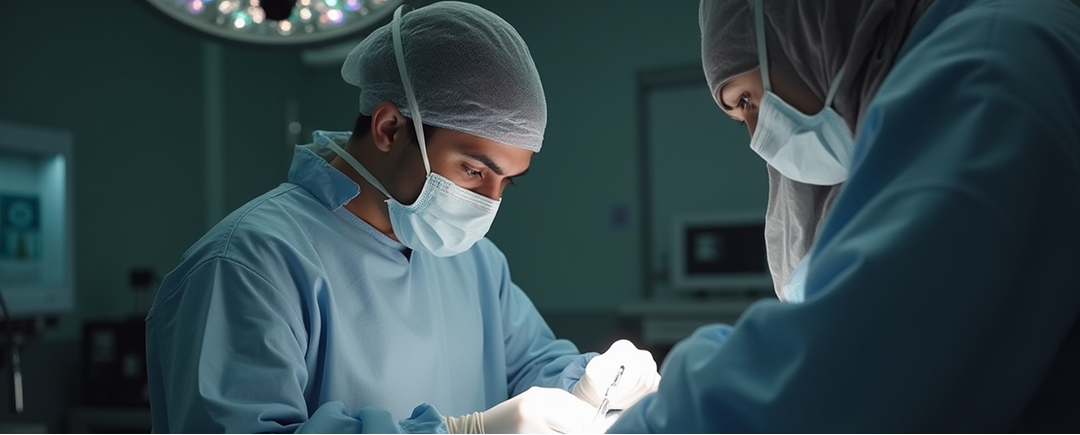
Acute and Trauma care
Level III Trauma & Emergency Surgery - Always Ready, Always Close.
Rapid damage-control surgery, multidisciplinary resuscitation, and comprehensive critical-care follow-up.
Trauma & Acute-Care Surgery (TACS) offers immediate management for penetrating, blunt, and thermal injuries as well as emergency surgical conditions. Our team uses evidence-based protocols like ATLS®, DCR (damage-control resuscitation), and ERAS-acute. Multidisciplinary collaboration with specialists in radiology, rehabilitation, and critical care ensures optimal outcomes and efficient patient flow.
Level III
trauma accreditation with a dedicated trauma bay & hybrid ORDoor-to-CT and door-to-OR
median times of less than 15 and 30 minutes, respectively200
trauma cases managed monthly with 24/7 access to radiology and on-call surgeons98%
survival rate in major trauma casesCommon Conditions & Subspecialty Clinics.
- Early mobilization protocols
- Physiotherapy and occupational therapy integration
- Psychological support and trauma recovery planning
- Medical Emergency Team (MET) activation
- Early sepsis recognition and bundle implementation
- Airway control and resuscitation outside the ICU
- Open fractures
- Vascular injury repair
- External fixation
- Muscle-flap coverage for limb salvage
- Partial- and full-thickness burns
- Complex degloving injuries
- Fasciocutaneous and muscle flap coverage
- Acute appendicitis, cholecystitis, bowel obstruction or infarction
- Perforated ulcers, diverticulitis complications, intra-abdominal sepsis
- Perforated peptic ulcer
- Strangulated hernia
- Ischemic bowel
- Necrotizing soft-tissue infection
- Acute respiratory distress syndrome (ARDS)
- Sepsis and multi-organ failure post-trauma
- Compartment syndrome monitoring and intervention
- Exsanguinating abdominal trauma
- Massive liver or splenic injury
- Destructive bowel injury requiring staged repair
- Head injury with hemorrhage
- Thoraco-abdominal penetrating trauma
- Pelvic fracture with associated vascular injury
Procedures & Treatments.
Pre-hospital blood & tranexamic acid administration (with EMS)
Video laryngoscopy & surgical airway (cricothyrotomy)
Massive transfusion protocol (1:1:1 PRBC: plasma: platelets)
Robotic & laparoscopic emergency surgery (perforated ulcer, bowel obstruction)
Pelvic packing & external fixation for hemodynamic instability
Thoracotomy & clamshell thoracotomy for penetrating chest trauma
Continuous renal-replacement therapy (CRRT)
Veno-venous ECMO for trauma-induced ARDS
Hyperbaric oxygen therapy for crush injury & compartment syndrome
Goal-directed hemodynamic monitoring with PiCCO / FloTrac
Sepsis-6 in Surgery
Antibiotics and source control within 1 hour
Acute Care Hotline
Direct surgeon line for referring hospitals
Trauma Code Red
Trauma team, OR, CT, and blood bank mobilized in under 5 minutes
Care Pathway & Coordination.
Pre-Notification & Activation
EMS alerts trauma bay; the team is ready at bedside before arrival.
Primary & Secondary Survey
ATLS® protocol, FAST/E-FAST, portable CT if indicated.
Operative / Non-Operative Decision
Hybrid OR, IR embolization, or ICU observation based on findings.
Damage-Control & Critical-Care Phase
Temporary closure, permissive hypotension, resuscitation management.
Definitive Repair & Reconstruction
Return to OR within 24–48 hours for definitive closure/fixation.
Rehabilitation & Follow-Up
Physiotherapy, psychological support, outpatient trauma clinic at 2 weeks, 6 weeks, 3 months.
Technology & Facilities.
Hybrid Trauma Bay with Sliding CT
Whole-body scan without patient transfer.
Portable Digital X-Ray & Ultrasound
Imaging in under 2 minutes at bedside.
Hybrid OR with Angio-Suite
Embolization and laparotomy performed in the same room.
Endovascular Stent-Graft Kits
For rapid vascular control.
Wireless Physiologic Monitors
Real-time vitals sent directly to the command center.
Trauma Registry & Analytics Platform
Monitors and refines treatment protocols for better outcomes.



